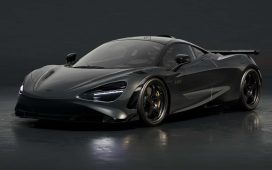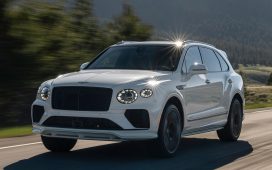A friendly and non-pushy sales exec called Andrew Bradburn proved to be helpful and knowledgeable, so when we were later discussing with Bentley HQ a suitable place for the new Flying Spur Hybrid to be delivered, I thought of High Wycombe and everyone was happy with that. I arrived on the appointed day, met various staff members led by dealer principal Ian Smith, and spent an hour learning about our new car (again with Andrew Bradburn leading) before driving it away, dosed with quality coffee and very well briefed.
The Hybrid’s major claim is its petrol-electric powertrain. It is pretty similar in overall weight to a V8, except that its battery weight migrates to the lower boot, which gives the weight distribution a 52% rearward bias. In practice, you feel nothing different. What you do notice, though, is the lack of the four-wheel steering system (omitted to make space for the battery) that has been available with non-hybrid Spurs since 2020. The Hybrid isn’t cumbersome, but you’re always aware of its size where the 4WS versions feel almost compact.
However, there are no other drawbacks and some big advantages. So far, my overall fuel consumption is 35.5mpg, a cool 10-12mpg (or around 50%) better than I’d get from a V8. Of course, the available EV-only mode comes with amazing refinement, but you hardly notice when the twin-turbocharged V6 chimes in, both because that’s also refined and because the integration of the different drive sources is first class. And it goes. The figures say it’s a shade slower than the V8 and W12, but a Spur Hybrid can still lay down an effortless 0-100mph sprint in 10.2sec, which is all you need to know.
The battery-only range – quoted at 25.5 miles – has so far turned out to be 33 miles, which doesn’t match a Range Rover’s prodigious 50-odd miles but is still handy. It is delivered by a strong 134bhp electric motor that sits between the 2.9-litre V6 engine and the eight-speed automatic gearbox (and, like all electric motors, it delivers maximum torque at step-off), and the EV-only performance feels accessible and powerful.
The car will frequently cruise on motorways at 70mph with the engine off. At my Gloucestershire domestic power rates, using a 7kWh Andersen charger, a full charge (the battery’s usable capacity is 15.1kWh) takes a little less than two and a half hours and costs a shade under £6. When I acquire more experience, I’ll do the sums properly.










